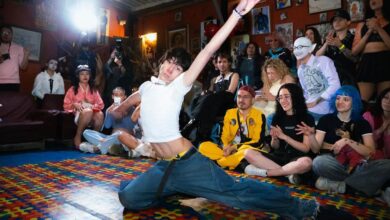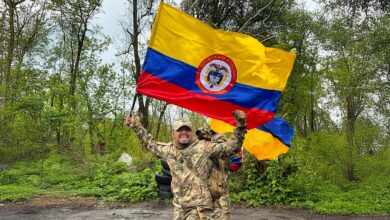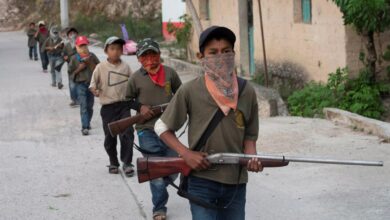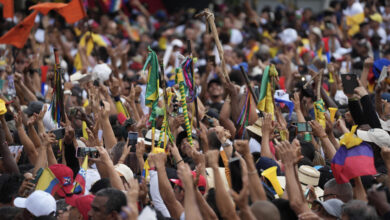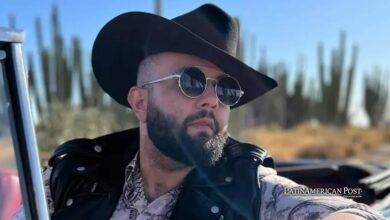Colombia’s Clay Artist Sculpts Memory, Empathy, and Viral Conscience
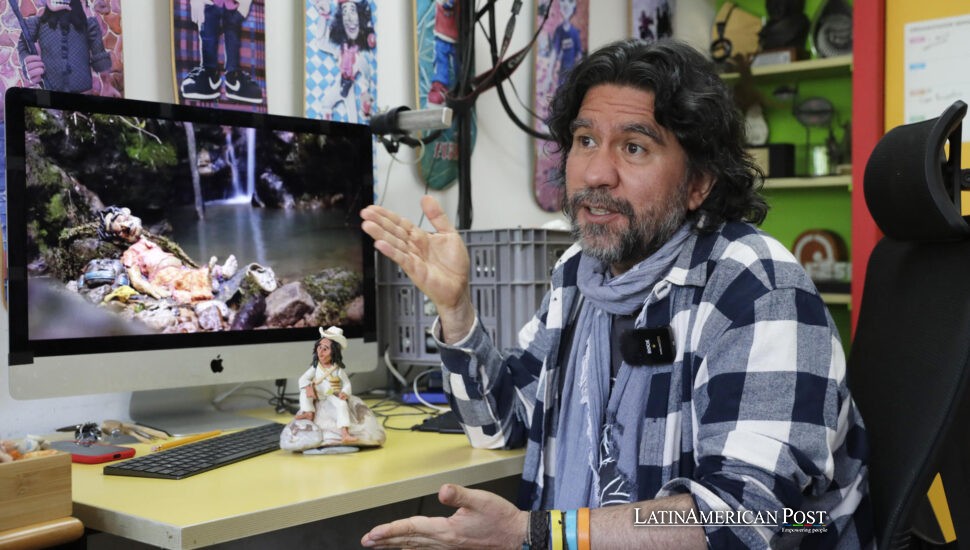
In a Bogotá apartment that doubles as a memorial, Edgar Humberto Álvarez molds Colombia’s pain and resilience into plastilina sculptures—turning grief into empathy, violence into testimony, and memory into something the internet can’t scroll past.
From Kitchen Dough to Clay Testimony
Step into Edgar Humberto Álvarez’s living room and the air shifts. There are no pedestals, no velvet ropes—just walls lined with clay faces: assassinated trans women, campesinos displaced by war, guerrilla leaders, ex-presidents, children missing from their histories. Each shelf is labeled: “Policía,” “Historia,” “Migración,” “LGBTQ+.”
Álvarez, now 49, builds all of it with plastilina—the modeling clay more often found in school supply aisles than museums. But in his hands, it becomes material for memory. “What I want is for them to generate dialogue,” he tells EFE.
The origin story feels quiet, even domestic. As a child, he learned to shape dough while helping his grandmother make arepas. He kneaded bricks of clay pulled from his grandfather’s job sites. What began as play became expression. Today, it is a craft that hums with urgency.
In the middle of his modest Bogotá apartment, one table serves as his studio. The figures are small, but the questions they raise are enormous. Why does a society forget the people it hurts? How do you soften anger without flattening truth? In this room, plastilina doesn’t pretend to answer. It invites the conversation.
Going Viral One Face at a Time
The handle “Se lo explico con plastilina”—I’ll explain it with clay—is more than a clever name. It’s a mission. Álvarez’s sculptures have built a loyal following of nearly a million on Facebook and over 180,000 on Instagram. But he never set out to chase virality.
He started in Los Angeles, far from home, after meeting unhoused people whose lives haunted him. That led to “Los invisibles,” a short film about the unseen that changed his path. “Far from my country, I became more Colombian than ever,” he said. He began sculpting memory the way others journal or pray—daily, with intention.
His figures became portraits and then parables: a trans woman thrown into a river in Medellín, whose likeness he shaped and posted until President Gustavo Petro reshared it in outrage; a donkey strapped with explosives during the war, now rendered in plastilina and placed where schoolchildren could meet it.
The figures always come first: the wide eyes, the raised brow, the slouch or squint that hints at how the real person once moved through the world. Then comes the caption—a few lines that root the sculpture in fact and feeling. The effect? A feed that arrests you mid-scroll. “I’ve been living for years by making little plastilina figures—and loving it,” he says, almost surprised.
Sculpting for Dialogue, Not Division
Álvarez doesn’t avoid politics. He sculpts directly into its wounds: forced disappearances, gender violence, migrant death, military brutality, media apathy. But he’s careful not to caricature the news cycle. “More than dividing, I’m interested in uniting,” he tells EFE.
One of his first commissions was for a 2010 presidential campaign. The image of candidate Antanas Mockus in plastilina showed up on posters across Colombia. After that came more satirical work, but Álvarez pulled back. Too many threats. Too much noise.
Instead, he chose to dig deeper—into stories that resist easy framing—the murdered trans woman. The schoolteacher was caught in crossfire—the child migrant who crossed the Darién Gap with only a plastic bag and a name in Sharpie.
He doesn’t sculpt Álvaro Uribe’s trial. He sculpts the teenager shot in a protest. He doesn’t chase daily headlines. He holds space for what they overlook.
Still, he breaks his own rules sometimes. When Senator Miguel Uribe Turbay was assassinated, he made a figure in glasses, parted hair, and a suit, because the country seemed to cry all at once. That’s his compass: not the party, but the pulse.
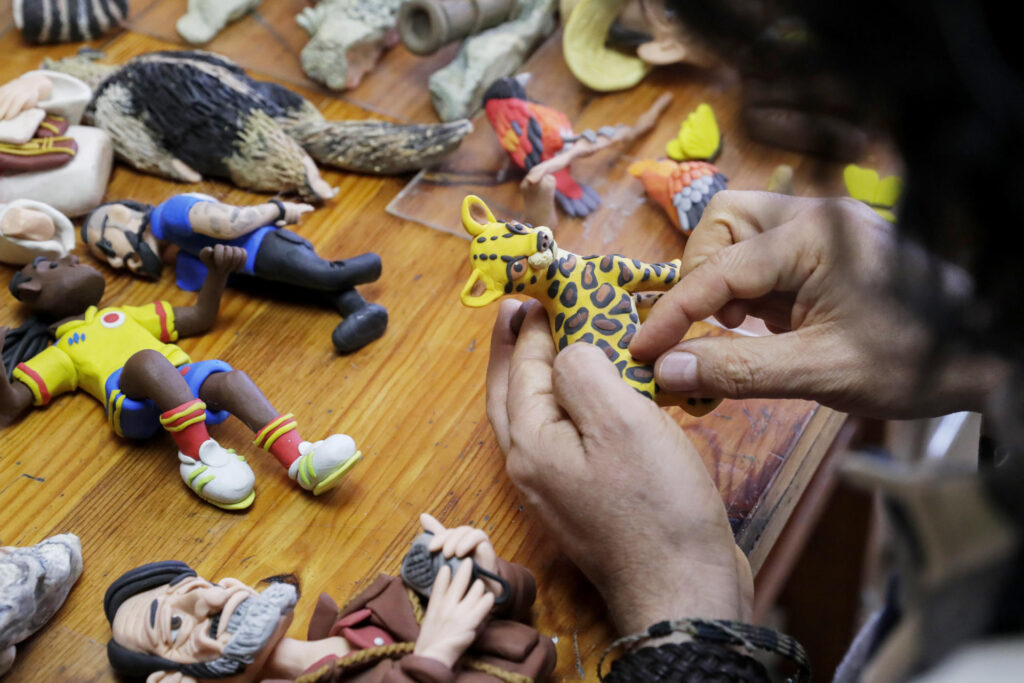
Building a Clay Bridge Through the Jungle
Right now, Álvarez is working on a short film about the Darién Gap—the perilous jungle between Colombia and Panama that has become a migration bottleneck for thousands fleeing poverty, violence, and climate collapse.
To make the film, he traveled into the Darién himself. The jungle pushed back. Humidity blurred the edges of his clay. Mosquitoes kept time. But he sculpted anyway: small migrants in ponchos, exhausted eyes, bent backs, plastic bags as backpacks.
“Plastilina serves as a bridge,” he told EFE. First, people say, “Oh, how cute, a little doll.” Then they look closer. Then they see.
That bridge is working. Classrooms use his figures to talk about the conflict. Parents use them to explain what it means to disappear. Young trans Colombians message him to say, “She mattered because you made her face.”
He never uses the figures as props. He sculpts, he posts, and then he listens. Sometimes he’s the one who cries.
Each head takes hours. Each hand, days. The details matter: a ribbon on the wrist of a missing daughter—a fold in the jacket of a campesino. A tattoo on the neck of a boy was last seen at a protest. The care he gives each one is a kind of resistance. So is the joy. His animals—playful dogs, alert rabbits—balance the grief. The world is brutal. His plastilina says: yes, but also.
When the phone stops recording, when the camera is packed away, Edgar Humberto Álvarez goes back to the tray of parts waiting on the table. A new face, not yet famous. A set of eyes still empty. He works without haste.
Also Read: Mexico’s Untold Role in Freedom Journeys Takes the Stage in “Mexodus”
In a city that scrolls past tragedy and a country still divided by memory, he offers a slow, radical act: shaping the pain into form, holding it steady, and letting it be seen.
“Empathy,” he says again and again. “Empathy.”
The plastilina is soft. But what he makes with it holds weight.
Credits: Reporting based on interviews by EFE.

